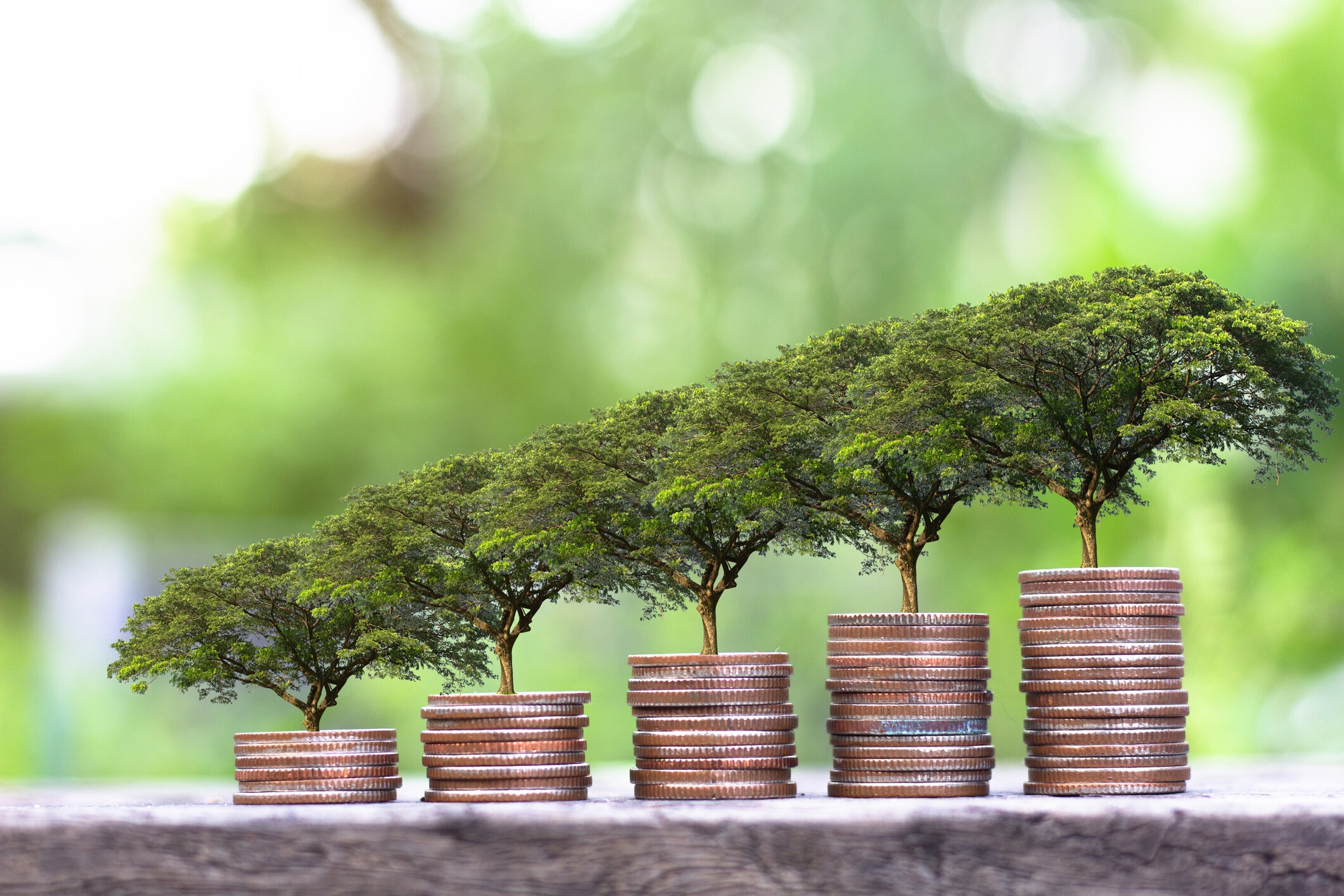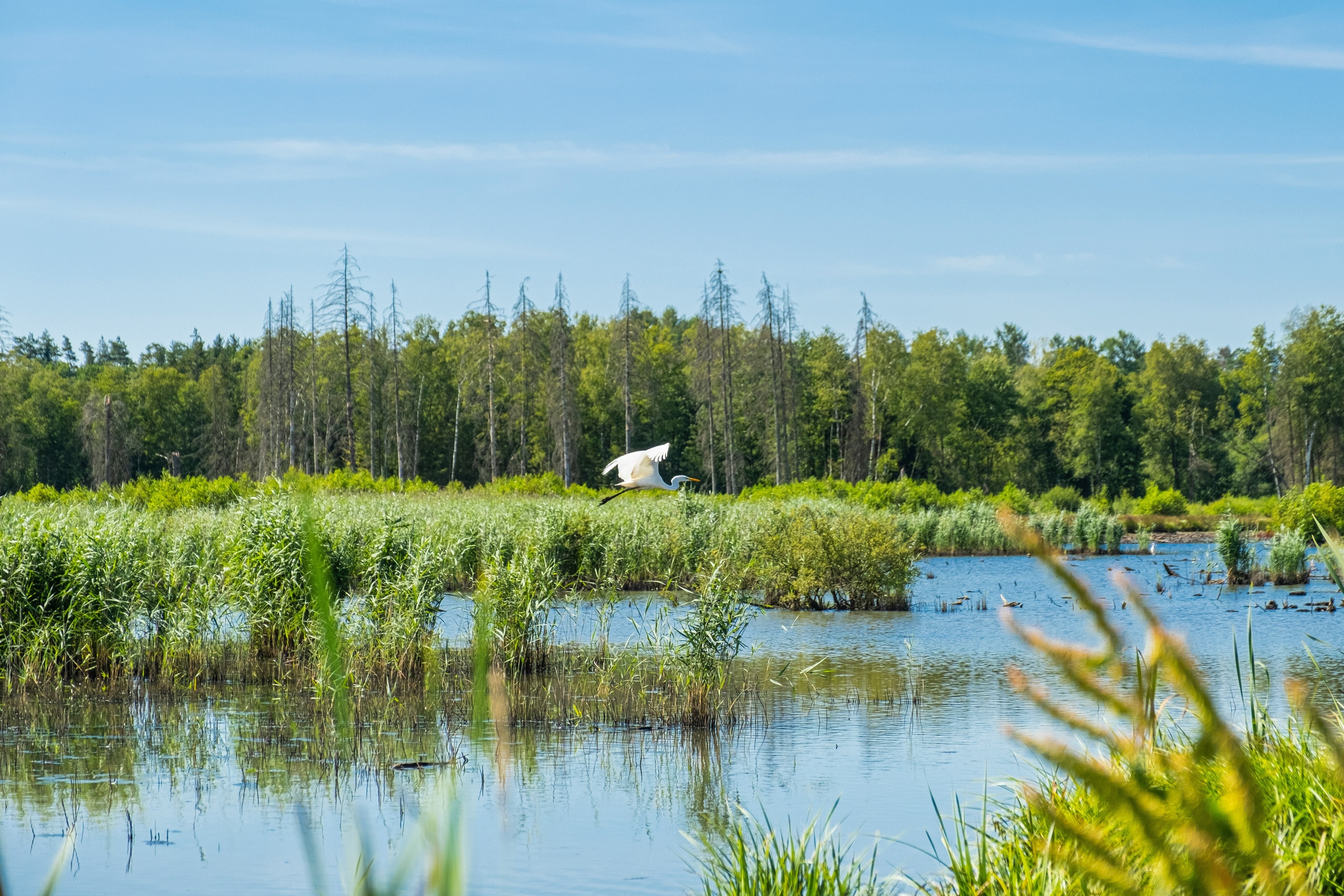Reviving our forests isn’t going to be easy, but science will help

Restoring forest ecosystems and landscapes requires integrating diverse values, practices.
Image: Unsplash/Maxim Hopman
Stay up to date:
Forests
- Forests, as diverse habitats and ecological systems, support immense biodiversity and human wellbeing.
- They also absorb around 30% of carbon emissions released into the atmosphere by fossil fuels, data shows.
- But simply protecting the forests we have left is no longer sufficient, say forest restoration scientists.
- Forested areas must also be restored to address the twin crises of climate change and biodiversity loss.
- In this article, they outline the complexity of the issue and how the public and private sectors can work to help solve it.
Forests are complex ecosystems with numerous interacting components, including plants, soil, water, fungi, people and other animals. These diverse habitats and ecological systems support immense biodiversity and human wellbeing, and absorb approximately 30 percent of carbon emissions from burning fossil fuels. Existing and restored forests also help to regulate water flows and local rainfall, and prevent soil erosion.
The first thing governments and businesses must do is protect the forests we have. It takes many years, and potentially large social and financial resources, for a forest to grow into intricate, complex ecosystems. It's also clear that simply protecting what we have left is no longer sufficient and that we must restore our forests if we are to address the twin crises of climate change and biodiversity loss.
However, forest restoration has been called both an easy panacea for - and dangerous distraction from - many of the world’s challenges. Both labels are overly simplistic. Forest restoration when done right can solve multiple problems, when done wrong can worsen them. This complexity does not mean we should abandon forest restoration.
Our experience as forest restoration scientists confirms that effective forest and land management can be achieved through a multi-faceted approach that integrates context-specific strategies, such as conservation, restoration, and sustainable land use, with the deep consultation and involvement of local people and Indigenous communities.
A complex problem requires a multi-faceted solution
The latest science tells us that restoring forest ecosystems and landscapes requires integrating diverse values, practices, knowledge, and objectives. Taking a socio-ecological systems approach to restoration will enable effectiveness, and more long-lasting benefits for people and nature.
Take Instituto Terra, that worked with local communities and farmers to bring the Atlantic Forest back to life in the Rio Doce Watershed, Minas Gerais, Brazil. The project formed a regional hub for restoration across the entire Rio Doce Valley, an area the size of Portugal. Restoration focused on the protection and restoration of springs and streams and improvement of water quality within all of the Rio Doce watershed. Instituto Terra also ran educational programmes for school teachers, students and technical professionals. The benefits of this integrated approach were far larger than carbon capture.
Although there can be many benefits from forest restoration, there are also challenges that need to be addressed. For instance, effective restoration projects require adequate funding, skills building, strong support from local communities and supportive policies and government agencies. Additionally, the success of forest restoration projects depends on the availability and selection of suitable tree species and the ability to monitor and evaluate outcomes, as well as mechanisms to sustain the restored forest over the long-term.
If the land has been degraded beyond a certain point, human intervention will be required. This is where active interventions such as tree planting come in. However, in other cases, little or no tree planting is needed and forests can regrow on their own at a fraction of the cost - a process known as natural regeneration.
For example, Brazil is one of the five countries with the largest priority areas for restoration, and has made a large commitment to restore 22 million hectares. Across the Amazon and Atlantic forests, there are millions of hectares recovering through natural regeneration, and landowners, state governments and researchers are working together to promote more sustainable land use and management to help trees grow back.
Indigenous stewardship is playing a big part. For example, the Kawaiwete (Tupi-Guarani) and the Ikpeng (Carib-Arara) peoples in Mato Grosso have developed alternative techniques of forest management, based on cultural knowledge to select land, manage cultivation cycles, protect specific trees, and attract seed dispersers.
How does the World Economic Forum encourage biological diversity?
No one size fits all
Several strategies can help to ensure successful forest restoration efforts. Initial assessments of a site’s capacity for recovery and the needs of local communities help to guide the level and type of interventions needed. Careful site preparation and selection of planting locations, if planting is warranted, are critical factors that determine the success of restoration projects. Choosing the right tree species is also important, as different species have different growing requirements and provide different benefits to people. Focusing on native species from the same region that can withstand potential changes in climatic conditions will enhance the recovery of local plants and animals. Focusing on trees that regenerate rather than deplete water availability will safeguard water services. Selecting trees that provide products of value to local communities will help to ensure tree persistence.
However, there is no universally “right” approach to restoring tree cover and forests, it depends on context. Plantations can produce woodfuel for local communities, reduce harvesting pressure on intact forests, and provide renewable, less carbon intensive building materials compared to concrete and steel. Agroforestry systems can increase and diversify food production while boosting biodiversity value and carbon storage. Natural regeneration also has a strong role to play, and can be highly successful and cost-effective, when conditions are right and the land has not been too degraded.
Restoring forests will likely require some land use change, but thoughtful land use change can lead to overall positive outcomes. The critics of reforestation on agricultural lands fail to recognise that the existing land uses in many cases are harming local communities, causing economic inequities, flooding, erosion and loss of soil fertility, fires, poisons in water, and loss of local sustainable livelihoods. Protecting climate, biodiversity, water supplies, and enhancing rural wellbeing can involve transforming converted land into restored land, but again this must be based on local decision-making and support by local communities.
There are many examples of communities that have opted to do this on their own, such as in Shinyanga Tanzania, where over 18 years at least 350,000 hectares had been restored in 833 villages. Governments and technical institutions can help by providing incentives and technical support for communities who want to transform unsustainable and harmful land-use practices and restore their land. Land rights and tenure are central issues. More inspiring locally-led restoration projects exist across Africa, and partnerships such as TerraFund for AFR100 are investing capital and providing tailored capacity to accelerate locally-led restoration action.
The mission for improved monitoring
Ultimately, we do not have anything close to robust monitoring of: the quality, suitability, and fate of planted seedlings; the progress of spontaneous or assisted natural regeneration; benefits from reforestation interventions; and outcomes of different restoration approaches. This lack of monitoring does not mean that projects are failing - many are thriving. But it means that we are missing out on opportunities to learn from both successes and failures. Although it is difficult, project leaders are getting better at documenting failures so we can learn collectively. Together we are striving for accounting, verification, and certification systems for carbon or biodiversity offsets. For example, Standards of Practice for Ecosystem Restoration have recently been developed and provide a framework for developing standards and certification systems.
In an effort to improve quality, transparency and accountability, there are new tools such as the Framework for Ecosystem Restoration Monitoring Platform of the Food and Agriculture Organization of the United Nations, which tracks restoration progress across terrestrial ecosystems, or Restor, which brings together the latest data and thousands of conservation projects worldwide.
It is equally important to empower restoration project developers, including local communities with monitoring best practices and datasets to accurately track restoration progress. Platforms such as TerraMatch are supporting such locally-led monitoring efforts. The UN Decade on Ecosystem Restoration aims to mobilise action and knowledge sharing across all social groups, sectors, and regions to avoid and reduce ecosystem degradation and to amplify the scale of restoration across all types of terrestrial and marine ecosystems. They have developed a platform for monitoring restoration efforts and documenting best practices. In addition, the Restoration Project Information Sharing Framework has been developed to track progress and trends in ecosystem restoration.
Where the private sector can help
The private sector has a key role to play to bring scale, innovation, funding and expertise to restoration projects. Many companies have already made high quality commitments to support restoration efforts, through initiatives such as the World Economic Forum’s 1t.org initiative, which aims to support the movement to conserve, restore, and grow one trillion trees by 2030.
Companies across the world invest in forests for all sorts of reasons, to clean up their own supply chains or to align with corporate net-zero plans and contribute to the achievement of global sustainability goals. But sadly some companies have done it for the wrong reasons - greenwashing. Restoration instead of reducing fossil fuel usage, phantom forests, failing plantations, and cheap, poorly planned, top-down projects are the result. This leads to declining consumer confidence in green claims. It is important that both the private and public sectors understand that achieving high quality forest restoration will cost more and that appropriate diligence is needed.
Greenwashing is never okay. The most important thing companies can do is reduce their fossil fuel emissions, as well as protect intact ecosystems. But even if we dramatically dial down emissions, we would still need to remove additional carbon dioxide from the atmosphere. And we still need to protect and restore nature to safeguard the ecosystem services on which we all rely. Reforestation remains one of the most cost-effective, scalable methods for carbon dioxide removal, but poorly-planned, ineffective and damaging practices move us off-course from reaching critical targets.
It takes time, concerted effort from all sectors, and pushing the boundaries of science, practice and policy to reforest well through a socio-ecological approach. We have already come a long way. Let’s not lose the momentum that has been built.
By Susan Cook-Patton, Senior Forest Restoration Scientist on the Global Natural Climate Solutions Science Team at The Nature Conservancy, Bernadette Arakwiye, Associate Manager at the World Resources Institute, and Robin Chazdon, Professor Emerita in the Ecology and Evolutionary Biology Department at the University of Connecticut and Research Professor with the Tropical Forests and People Research Centre at the University of the Sunshine Coast in Queensland, Australia.
Accept our marketing cookies to access this content.
These cookies are currently disabled in your browser.
Don't miss any update on this topic
Create a free account and access your personalized content collection with our latest publications and analyses.
License and Republishing
World Economic Forum articles may be republished in accordance with the Creative Commons Attribution-NonCommercial-NoDerivatives 4.0 International Public License, and in accordance with our Terms of Use.
The views expressed in this article are those of the author alone and not the World Economic Forum.
Related topics:
Forum Stories newsletter
Bringing you weekly curated insights and analysis on the global issues that matter.
More on Nature and BiodiversitySee all
Mark Gough and Naoko Ishii
September 15, 2025
Shivin Kohli and Alessandro Valentini
September 10, 2025
Kate Whiting
September 9, 2025





